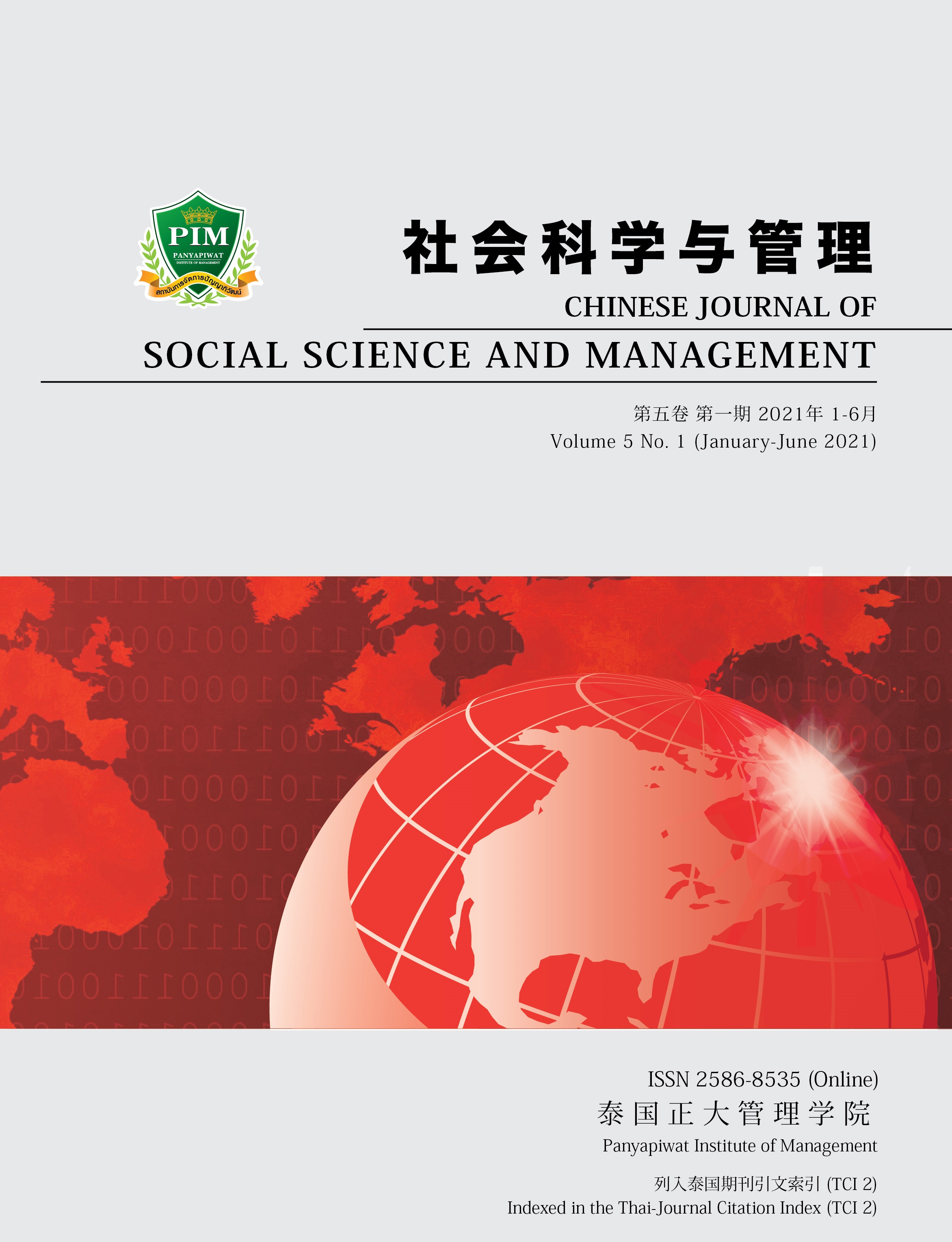EXPLORATION ON THE RELATIONSHIP BETWEEN INNOVATION CAPABILITY, INNOVATION INPUT AND CORPORATE PERFORMANCE: A SAMPLE OF PHARMACEUTICAL MANUFACTURING
Main Article Content
Abstract
This paper takes the listed companies in the pharmaceutical manufacturing industry in Shanghai and Shenzhen in 2008-2018 as research samples to study the relationship between enterprise innovation ability, innovation investment and performance. Stata 15.0 analysis software was used to empirically test the relationship between innovation investment, and enterprise performance, the relationship between innovation investment and enterprise innovation ability, and the intermediary role of innovation ability on enterprise innovation investment, and enterprise performance. The empirical model of this paper differs from previous empirical studies overemphasized and widely used in the research and development investment and enterprise performance directly, one-way effect between the linear regression model, and takes into consideration the reality of the innovation of the lag effect of the existence of influence in enterprise performance, enriched and expanded the research and development investment and enterprise performance correlation models and methods of empirical research. The results showed that innovation investment has a significantly positive role in promoting the performance of pharmaceutical enterprises; innovation investment has a significantly positive role in promoting the innovation ability of enterprises; the innovation ability of enterprises has an intermediary effect on the relationship between innovation investment and corporate performance. The results should be helpful for enterprises to explore the mechanism of innovation input on enterprise performance, enrich and perfect the theory of enterprise innovation, and improve corporate performance.
Article Details
Chinese Journal of Social Science and Management Editorial Division
The Office of Research and Development, Panyapiwat Institute of Management
85/1 Moo 2, Chaengwattana Rd., Bang Talat, Pakkred, Nonthaburi 11120, Thailand
Tel. 02 855 01048 E-mail: cjssm@pim.ac.th
References
Baron, R. M., & Kenny, D. A. (1986). The Moderator–Mediator Variable Distinction in Social Psychological Research: Conceptual, Strategic, and Statistical Considerations. Journal of Personality and Social Psychology, 51(6), 1173.
Ehie, I. C., & Olibe, K. (2010). The Effect of R&D Investment on Firm Value: An Examination of US Manufacturing and Service Industries. International Journal of Production Economics, 128(1), 127-135.
Falk, M. (2012). Quantile Estimates of the Impact of R&D Intensity on Firm Performance. Small Business Economics, 35(2), 1-9.
Ford, C. (2006). Improving Operating Performance of Genesis. Current to Pinion in Technology, 26(4), 165.
Freeman, C. (1976). The Economics of Industrial Innovation, Penguin Modern Economics Texts. Mexico City: Fondo De Cultura Económica.
Griliches, Z. (1981). Market value,R&D? And Patents. Economics Letters, 7(2), 183-187.
Guan, Y. J., Qu, M., & Wang, Y. (2013). Research on the Relationship Between R&D Input and Patent Output Based on the Category of R&D Subsidy - Based on the Empirical Evidence of Listed Enterprises in Shenzhen Small and Medium-Sized Board. Industrial Technology Economy, (4), 25-33. [in Chinese]
Hall, B. H., & Ziedonis, R. H. (2001). The Patent Paradox Revisited: An Empirical Study of Patenting in the US Semiconductor Industry, 1979-1995. Rand Journal of Economics, 32(1), 101-128.
Kletter, T. J. (1996). R&D, Scope Economies, and Plant Performance. Rand Journal of Economics, 27(3), 502-522.
Luo, T., Zhu, Q., & Li, D. (2009). Analyzing the Relationship Between R&D Input and Company Value. Financial Research, (6), 100-110. [in Chinese]
Mansfield, E. (1986). The R&D Tax Credit and Other Technology Policy Issues. The American Economic Review, 76(2), 190-194.
Muellen, D. C. (1996). Petents, Research and Development, and the Measurement of Inventive Activity. Journal of Industrial Econmics, 15(1), 26.
Stam, E., & Wennberg, K. (2009). The Roles of R&D in New Firm Growth. Small Business Economics, 33(1), 77-89.
Sun, H., & Wang, H. (2017). Government Subsidies, R&D Investment and Enterprise Innovation Performance: An Empirical Study Based on GEM High-Tech Enterprises. Science and Technology Management Research, 37(12), 111-116. [in Chinese]
Teece, D. J., Pisano, G., & Shuen, A. (1997). Dynamic Capabilities and Strategic Management. Strategic Management Journal, 18(7), 509-533.
Wang, Y. C., & Guo, Y. Y. (2008). Empirical Analysis of the Effects of R&D Input and Output of Listed Companies. Industrial Economics Research, (6), 44-52. [in Chinese]
Wernerfelt, B. (1984). The Resource-Based Theory of the Firm. Strategic Management Journal, 5, 171-180.
Yang, N. (2015). Capital Structure, Technological Innovation and Corporate Performance-An Empirical Analysis Based on Listed Companies in China. Beijing Social Sciences, (7), 113-120. [in Chinese]
Zhou, Y., Cheng, L. R., & Wang, H. (2012). Is the Higher the Level of Technological Innovation the Better the Financial Performance of the Company? - An Empirical Study based on the Patent Application Data of Chinese Pharmaceutical Listed Companies for 16 years. Financial Research, (8), 170-183. [in Chinese]


